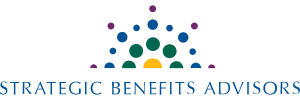In the face of economic turmoil, inflation and uncertainty, employers and employees alike are feeling the strain when it comes to their retirement plans and savings.
While 73% of employees feel somewhat confident in their ability to retire, according to a 2022 survey by the Employee Benefit Research Institute, that confidence has taken a dip since 2021, when 80% of workers reported sunny outlooks for their post-work life.
The key to shoring up savings and retirement-plan offerings starts with one thing: education. For both plan sponsors and participants, knowledge is power — and can help employees make smart decisions to support their future finances, and help employers protect themselves while supporting their employees.
EBN recently chatted with Ted Benna, who designed and implemented the first 401(k) savings plan, and Mindy Zatto, a co-founder and principal at Strategic Benefits Advisors.
Together, the pair have decades of experience in the retirement industry, and walked us through considerations employers need to make in their retirement plan offerings, how and why employees need to save early and think intentionally about what their savings will mean in retirement, and why changing policies and increasing litigation might just create some silver linings within the industry.
The following conversation has been edited for length and clarity.
Let’s talk about generating lifetime income from 401(k) plans. What do plan sponsors and participants need to know and understand?
Benna: Most people who are retiring have a significant problem making what they’ve accumulated stretch for a lifetime. One thing that’s really good is, there’s legislation that will require participants to be able to receive information — without actually buying an annuity inside the plan — that shows what level of income they’d have at retirement based on what they’ve accumulated at the rate at which they’re contributing. That’s a big plus, because there’s always been this idea of a “nest egg,” but that concept has no connection to the level of income you’re going to need in retirement.
Zatto: We’re in our infancy here with trying to convert lump-sum, accumulated nest eggs in a 401(k) world — because of how it has evolved — to lifetime income. There’s a lot of education that needs to take place, for both employers and employees, to get people ready for it. And then the market needs to evolve beyond the first option we think of, as a fixed income annuity in a 401(k) plan.
People are retiring and living for much longer than they used to. How does that change how employers and plan participants should be thinking about their retirement preparedness?
Benna: The biggest one, in my opinion, is to save as early in your career as possible. The longer you wait, the less likely it is that you’re going to have enough. The other thing is, as you are approaching and entering your retirement years, you need to invest a lot more conservatively than what the traditional models recommend. You can’t afford to take a 30% hit in the first year or two of retirement. But if you’re younger and in the accumulation stage and you get a 30% drop, I’m going to tell you, hey man, this is great, dump as much money in as you can and take advantage of it. But if that happens during retirement, you have to sell more shares to maintain the income you need. That’s a serious problem.
Zatto: The decumulation phase is where we need to focus, and that’s a new buzzword in the industry. The next step is teaching people their options. If you retire at 65 and live another 30 years, there are some safety nets to plan for that, like a long-term deferred annuity.
Benna: That’s a great point. The market has become flexible, so you’re saying you could take out maybe 20% of the nest egg you’ve accumulated and buy a guaranteed income that kicks in at maybe 75 or 80 years of age. That costs a heck of a lot less than buying a guaranteed income at 65.
Zatto: Right? The market is really just starting out, so there are a lot of options being developed. Pricing is always the question, and you’ve got to be really transparent about pricing and make sure participants understand what they’re paying for. It will be interesting to see how things will evolve — and plan sponsors can help with that evolution, as they make more demands as their participants start to request things, and we learn what resonates and what works for the population as they’re aging.
That’s a lot of change to communicate to employers and employees. For consultants and advisers, what’s the best approach to education that will stick?
Zatto: To make it resonate with people, they need to see numbers that mean something to them. So it’s just going to be a lot of work showing examples. What will it mean to people personally? That’s what hits home.
Employees are changing jobs now more than ever. What does that mean when it comes to losing money or losing track of money in a number of 401(k) accounts?
Benna: It’s a big mistake that when somebody leaves their job, they give them a statement when they’re 35 years old that says they have $25,000 that they can take as cash and do whatever they want with it. It doesn’t make any sense! There’s an organization, Retirement Clearinghouse, that I’ve worked with, and that has spearheaded the effort to get automatic portability potentially legislated.
Zatto: So what that proposed legislation would do is, instead of mandatory cash-outs of under $5,000, it would automatically roll it to the next employer. That comes with its challenges, technologically, but it will be really helpful to participants in terms of what their money can do for them. There are compound interest examples that show that if you start saving at 25 and contribute to 65, versus starting at age 35 and contributing to 65, you may have twice the balance.
In some ways I think, as an industry, we’ve become our own worst enemy, because things have gotten so technologically sophisticated. It’s very easy to see your daily valuations and even change your investment allocations on the web or on mobile, and the same is true of distributions. It’s a little too easy to get your money. Putting things in place like automatic portability will help people think twice or realize the impact they might have on their nest egg.
Benna: I recommend that individuals get their money out of the plan when they leave their employer, because too often, they forget about it, and then it can be difficult to go back and track it down because businesses are sold, providers change, and all that.
Zatto: I think the Secure Act 2.0 has a proposal about a national registry of lost money, so we’ll see what happens with that. Because people do lose track of their money, believe it or not. And even if a plan sponsor attempts to find people and sends an official notice on letterhead, a lot of people just assume it’s a scam. So any efforts to make that easier across the board would be welcome in the industry.
How is the 401(k) environment being shaped by lawsuits in the industry? What litigation trends are you seeing?
Benna: From an employer’s perspective, you need to be very careful about the process that you follow because you have full fiduciary liability exposure. You need to be very careful about what you put into writing, and if you don’t have a policy, you’re open to attack. But if you have one in place, and you’re not following it, that’s just as bad or worse.
If you’ll let me divert, someone asked me recently what my response was when Fidelity came out that they were going to allow Bitcoin [investing]. And I said, employers have got to be crazy to allow their employees to do that, because as an employer, even if you’re being pressured, you have the fiduciary liability to what is offered to your participants. You offer this and it blows up like these currencies have been doing, you’re going to get sued.
Zatto: The litigation environment has really taken off as more data has become available. Excessive fees and questioning recordkeeping fees has been a big part of things, and it’s a double-edged sword. The 401(k) industry has become a commodity business, and we really still need careful recordkeepers. There’s a certain price to pay for that, but nonetheless, those fees are being scrutinized.
And then, the investments offered [are also under scrutiny]: the easy pickings for those were the ones where investment and asset managers offered their own proprietary funds to the exclusion of other funds. There are more nuanced lawsuits in that vein, so how funds are picked and monitored needs to be done very methodically and consistently. Documentation should be in place. Quarterly investment meetings should follow the investment policies you’ve put in place to make sure you’re doing your oversight as a fiduciary committee and in the best interest of participants. So in some ways, the whole litigation environment has been a silver lining that’s making plan sponsors better understand their role, at every size.

